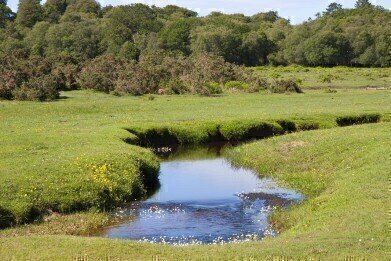Water/Wastewater
What Is Monitored in River Catchment Water?
Sep 02 2022
Securing the cleanliness of our rivers, lakes, reservoirs and other watercourses is not only imperative for providing enough drinking water for the world’s swelling population, but also for safeguarding the environmental health of the planet and the other flora and fauna with which we share it. Unfortunately, we haven’t always had as much awareness about how damaging some of our activities can be for these vital natural resources.
However, this awareness has grown significantly in recent decades. Today, there are strict regulations and protocols in place to ensure that water management companies employ sustainable practices to protect our waterways. Of course, river conservation is blind without robust monitoring procedures, which is why river catchments are thoroughly assessed on an ongoing basis for a number of different parameters and pollutants.
A laundry list of contaminants
It might seem as though the quality of a waterway should be immediately discernible through the naked eye alone. While there are certain contaminants which are instantly recognisable, there are plenty more which must be detected using laboratory processes.
For example, heavy metals like lead, mercury and zinc can break down into miniscule fragments or even dissolve entirely in a solution, but their impact upon the ecosystems therein (or the human populace exposed to the water through drinking supplies) can be just as serious. For this reason, it’s important to use highly sophisticated techniques, such as the placement and supervision of advanced biosensors, to keep tabs on the concentrations of these contaminants.
Meanwhile, agricultural additives such as fertilisers contain ingredients like ammonia, nitrates and phosphates. If allowed to leach into a river or lake, they can cause a nutrient imbalance in the ecosystem, promoting the growth of some species to the detriment of others. This can have devastating repercussions for the survival of entire species, which is why nutrient levels are another key indicator of water quality.
At the same time, there are literally thousands of other chemicals, toxins and bacteria which can infiltrate a water source – and about which we know alarmingly little. Termed contaminants of emerging concern, these substances can persist in the environment for many years and pose long-term threats to the health of the river catchment and the life in its vicinity.
Myriad measurements
Aside from the actual pollutants themselves, scientists can also draw significant conclusions about the status of rivers and river catchments through a variety of other parameters. As such, they also deploy methods capable of making a number of other measurements.
This can include (but is not limited to) the following parameters: depth, depth-velocity, temperature, turbidity, conductivity, pH levels, dissolved oxygen levels, chlorophyll-a, flow, soil moisture, total organic matter, total organic nitrogen, total suspended solids, sea surface salinity, sediment yield and run-off, among many others.
Of course, each of these different parameters requires a specific apparatus and strategy, which makes the matter of river catchment monitoring a very complicated business indeed. Fortunately, science has advanced significantly in this respect and the advent of integrated yet tiered monitoring systems aims to make the process as simple and as stress-free as possible.
Digital Edition
IET 34.2 March 2024
April 2024
Gas Detection - Biogas batch fermentation system for laboratory use with automatic gas analysis in real time Water/Wastewater - Upcycling sensors for sustainable nature management - Prist...
View all digital editions
Events
Apr 24 2024 Jakarta, Indonesia
Apr 24 2024 Sao Paulo, Brasil
Apr 30 2024 Melbourne, Australia
Apr 30 2024 Birmingham, UK
May 03 2024 Seoul, South Korea


















